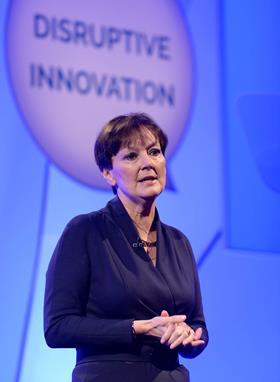
The UK's food-to-go market is set to grow by up to 35 per cent by 2021, with food-to-go specialists such as Greggs the strongest climbers, IGD has predicted.
The grocery research charity expects that, provided there is a favourable economic backdrop, the burgeoning market will be worth £21.7bn by 2021. This is up from £16.1bn in 2016, offering big opportunities for growth.
The IGD splits the market into five segments, all of which are forecast for significant growth.
Food-to-go specialists, such as Pret A Manger, Greggs and Subway, have been growing their size and scale across the UK and will be the strongest climbers, leapfrogging quick service restaurants (QSRs) - including fastfood chains such as McDonalds, Burger King and KFC - to become the largest area of food-to-go.
The specialist sector is predicted to grow by nine per cent over the next five years from £4.6bn to £7.1bn in value. Quick service restaurants (QSRs), meanwhile, will grow at a slower pace (3.6 per cent), boosting their combined value from £5bn to £6bn andbecoming the second largest food-to segment.
Two other sectors – coffee specialists; and convenience stores, forecourts and other retailers – are also expected to achieve strong growth. According to IGD, coffee specialists will boost their total value by 7.5 per cent from £2.7bn to £3.9bn, while the convenience store segment will enjoy 5.8 per cent value growth, rising from £2.5bn to £3.3bn.
Supermarkets will remain the smallest – and slowest-growing – segment of the booming market, increasing their food-to-go value from £1.2bn to £1.4bn as they expand their ranges.
IGD’s chief executive Joanne Denney-Finch commented: “Suppliers are seeking ways to expand, so the growth potential of this dynamic and rapidly shifting sector represents a really clear opportunity. However, food-to-go is a different market to grocery retail and requires a distinct approach to succeed.”
The IGD chief added: “Shoppers are also beginning to adopt food-to-go as a lifestyle choice which presents a clear opportunity for these operators, and coffee specialists are responding to this by focusing more on food and improved lunchtime options.”
Unsurprisingly, speed of service is of paramount importance to shoppers – a key factor in why QSRs are forecast to be the second largest food-to-go segment in 2021. Denney-Finch said: “A new, modern generation of burger bars and an increased focus on healthier options is really helping to drive this part of the market.' Some 20 per cent of shoppers now purchase lunch on-the-go more than twice a week, according to IGD data.
In addition, the trend towards shopping little and often is driving growth in convenience stores and forecourts. “Busy, flexible lifestyles mean shoppers are shopping little and often,” explained Denney-Finch. “This culture is causing a boom in food-to-go for convenience stores. To ensure they meet this demand, we have seen convenience retailers introducing specialist food-to-go counters in their stores, as well tailoring their ranges to the different times of the day shoppers purchase this category.”
Supermarkets and hypermarkets are also beginning to focus more on their food-to-go offering and have been trialing new formats, counters and ideas in-store, the IGD reports. The charity’s research shows that supermarkets are the most popular place to buy a drink on-the-go (30 per cent) and breakfast-on-the-go (27 per cent).



